JVC TK-C920BE Handleiding
JVC
Bewakingscamera
TK-C920BE
Bekijk gratis de handleiding van JVC TK-C920BE (2 pagina’s), behorend tot de categorie Bewakingscamera. Deze gids werd als nuttig beoordeeld door 79 mensen en kreeg gemiddeld 4.6 sterren uit 40 reviews. Heb je een vraag over JVC TK-C920BE of wil je andere gebruikers van dit product iets vragen? Stel een vraag
Pagina 1/2

1. Read all of these instructions.
2. Save these instructions for later use.
3. All warnings on the product and in the operating instructions should be adhered to.
4. Unplug this appliance system from the wall outlet before cleaning. Do not use liquid cleaners or aerosol cleaners. Use a damp cloth for cleaning.
5. Do not use attachments not recommended by the appliance manufacturer as they may cause hazards.
6. Do not use this appliance near water - for example, near a bathtub, washbowl, kitchen sink, or laundry tub, in a wet basement, or near a
swimming pool, etc.
7. Do not place this appliance on an unstable cart, stand, or table. The appliance may fall, causing serious injury to a child or
adult, and serious damage to the appliance may fall, causing serious injury to a child or adult, and serious damage to the
appliance.
Use only with a cart or stand recommended by the manufacturer, or sold with the appliance. Wall or shelf mounting should
follow the manufacturer’s instructions, and should use a mounting kit approved by the manufacturer.
An appliance and cart combination should be moved with care. Quick stops, excessive force, and uneven surfaces may
cause the appliance and cart combination to overturn.
8. Slots and openings in the cabinet and the back or bottom are provided for ventilation, and to
insure reliable operation of the appliance and to protect it from overheating, these openings
must not be blocked or covered. The openings should never be blocked by placing the appliance on a bed, sofa, rug, or other similar surface.
This appliance should never be placed near or over a radiator or heat register. This appliance should not be placed in a built-in installation such
as a bookcase unless proper ventilation is provided.
9. This appliance should be operated only from the type of power source indicated on the marking label. If you are not sure of the type of power
supplied to your home, consult your dealer or local power company. For appliance designed to operate from battery power, refer to the operating
instructions.
10. This appliance system is equipped with a 3-wire grounding type plug (a plug having a third (grounding) pin). This plug will only fit into a
grounding-type power outlet. This is a safety feature. If you are unable to insert the plug into the outlet, contact your elect ician to replace yourr
obsolete outlet. Do not defeat the safety purpose of the grounding plug.
11. For added protection for this product during a lightning storm, or when it is left unattended and unused for long periods of time, unplug it from
the wall outlet and disconnect the antenna or cable system. This will prevent damage to the product due to lightning and power-line surges.
12. Do not allow anything to rest on the power cord. Do not locate this appliance where the cord will be abused by persons walking on it.
13. Follow all warnings and instructions marked on the appliance.
14. Do not overload wall outlets and extension cords as this can result in fire or electric shock.
15. Never push objects of any kind into his appliance through cabinet slots as they mat touch dangerous voltage points or short out parts that could
result in a fire or electric shock. Never spill liquid of any kind on the appliance.
16. Do not attempt to service this appliance yourself as opening or removing covers may expose you to dangerous voltage or other hazards. Refer
all servicing to qualified service personnel.
17. Unplug his appliance from the wall outlet and refer servicing to qualified service personnel under following conditions:
a. When the power cord or plug is damaged or frayed.
b. If liquid has been spilled into the appliance.
c. If the appliance has been exposed to rain or water.
d. If the appliance does not operate normally by following the operating instructions. Adjust only those controls that are covered by the operating
instructions as improper adjustment of other controls may result in damage and will often require extensive work by a qualified technician to
restore the appliance to normal operation.
e. If the appliance has been dropped or the cabinet has been damaged.
f. When the appliance exhibits a distinct change in performance - this indicates a need for service.
18. When replacement parts are required, be sure the service technician has used replacement parts specified by the manufacturer that have the
same characteristics as the original part. Unauthorized substitutions may result in fire, electric shock, or other hazards.
19. Upon completion of any service or repairs to this appliance, ask the service technician to perform routine safety checks to determine that the
appliance is in safe operating condition.
IMPORTANT SAFEGUARDS
PORTABLE CART WARNING
(symbol provided by RETAC)
S3125A
For Customer Use:
Enter below the Serial No. which is located on the body.
Retain this information for future reference.
Model No.
Serial No.
The lightning flash with arrowhead symbol, with
in an equi-lateral triangle,
is intended to alert the user to the presence of uninsulated “dangerous volt-
age” within the product’s enclosure that may be of sufficient magnitude to
constitute a risk of electric shock to persons.
The exclamation point within an equilateral triangle is intended to alert the
user to the presence of important operating and maintenance (servicing)
instructions in the literature accompanying the appliance.
For USA and CANADA
CAUTION: TO REDUCE THE RISK OF ELECTRIC SHOCK.
DO NOT REMOVE COVER (OR BACK).
NO USER SERVICEABLE PARTS INSIDE.
REFER SERVICING TO QUALIFIED SERVICE PERSONNEL.
CAUTION
RISK OF ELECTRIC SHOCK
DO NOT OPEN
IRIS
VIDEO
DC
L H
COLOR VIDEO CAMERA
LEVEL
VIDEO
DC
LEVEL
(b)
(c)
F
(d)
IRIS
VIDEO
DO
L H
COLOR VIDEO CAMERA
LEVEL
(e)
A B
C D
wq
IRIS
VIDEO
DO
L H
COLOR VIDEO CAMER A
LEVEL
4 mm
2 mm
E F
e
R
ESE
T
VID
EO O
UT
SE
E IN STRUC
TION
MANU
AL
AD
JU
ST
FOCUS
RB
OFF
OFF
OFF
AUTO
LL
PH AS E
WHT .
BA L
LC D
MA
MU
IN T
ON-B
LC
ON-A
ES
ON
-A
GC
OFF
ON-D
/
N
CRT
6mm
2mm
TK-C920BU/BE
TK-C921BEG
COLOR VIDEO CAMERA Instructions
Thank you for purchasing the JVC color video camera.
To obtain the best results from your new camera, read these instructions carefully before use; retain the manual for future reference.
WARNING:
TO PREVENT FIRE OR SHOCK HAZARD, DO NOT EXPOSE THIS UNIT TO RAIN OR MOISTURE.
INFORMATION (FOR CANADA) RENSEIGNEMENT (POUR LE CANADA)
This Class [B] digital apparatus complies with Canadian ICES-003.
Cet appareil numérique de la classe [B] est conforme à la norme NMB-003 du Canada.
Due to design modification, data given in this instruction book are subject to possible change without prior notice.
PRECAUTIONS
• Picture may not appear correctly if white-spot correction is performed incorrectly. Follow the steps listed in the instructions. (Reference:
White-spot correction ∆I) Do not perform this operation when there are no white spots.
• If the AGC switch is turned on, the sensitivity increases automatically in dark places. It is not a failure when the image looks grainy.
• If the D/N switch is turned on, the mode changes automatically to black and white in dark places. As the sensitivity increases, the image
may look grainy and white spots may appear. When changing modes, bright portions of image may be emphasized but this is not a
failure of the camera.
• If a zoom lens is used, check the back focus before mounting the camera. This also applies to lens ALC and LEVEL. (See the instructions
on lenses for details.)
• If a high-intensity object (such as a lamp) is shot, the image on the screen may have vertical lines (smear) or blur (blooming) at its
periphery (especially in AES mode). This is a characteristic of the CCD, and is not a defect.
• If an EE lens is used, set the automatic electronic shutter switch (AES) to OFF. If set to ON, flickering may occur. If a manual iris lens is
used, set the AES to ON.
•
When used in hot places, vertical lines may appear on the screen of this camera. This is a characteristic of the CCD and not a failure of the camera.
• The automatic tracking system may not function properly when shooting with non-standard lighting or lighting with a color temperature
which exceeds the capability of the camera. In such a case, set to the “MANU” position.
• If the camera subject is a single solid color (other than white), the auto white circuit will normally attempt to change this color to white.
In the case of this camera, if it cannot make a correct prediction, the previous white balance setting will be maintained until the subject
colors become more varied.
• Noise may appear in the picture and/or the colors may be incorrect if the camera is used near a radio or television transmitting antenna,
in places where strong electromagnetic waves are generated by transformers, motors, etc., or near devices emitting radio waves, such
as transceivers or cellular phones.
• To save energy, be sure to turn off the system when not in use.
OPERATING PRECAUTIONS
Storage and Location of Use
1. This camera has been designed for indoor use .When you use it outdoors, be sure to use a housing or the like.
2. DO not install or use the camera in the following places.
• In a place exposed to rain or moisture.
• In a place with vapor or oil, for example in a kitchen.
• When the ambient temperature rises above or falls below the acceptable range(from -10 °C to 50 °C)
• In a place at which corrosive gases are emitted.
• Near a source of radiation, X-rays, strong radio waves or magnetism.
• In a place subject to vibration.
• In a place with excessive dirt.
3. Using this unit or cables connected to this unit at places at which strong radio waves and magnetism are emitted (e. g. near a
radio, TV, transformer or motor)may give rise to noises in the image and changes in its color.
MOUNTING A LENS
1. Before mounting a lens, check whether it is a C-mount or CS-mount lens.
If a C-Mount lens is used, loosen the back-focus locking screw (M 2.6) using a Phillips head screwdriver, turn the back-
focus adjusting ring with your fingers or the screwdriver and change the mounting method.
2. Dimension (b) of the lens shown in the illustration must be as shown in the table below. If (b) exceeds the value in the table,
it may damage the inside of the camera or correct mounting may be impossible; never use such lenses. Do not attach the
C-mount lens when using a CS-mount.
The F mark indicates a focal point.
3. Mount the lens on the camera by turning the lens clockwise. Adjust its position.
4. When using an auto-iris lens with an EE amplifier, turn the switch to the “VIDEO” side. When no EE amplifier is equipped,
turn the switch to the “DC” side.
5. If the lens has an auto-iris mechanism,
Connect the lens cable after checking the pin arrangement.
* 4 pin plug: For details, please consult your JVC dealer.
CONNECTION
1. When the camera is powered, the image appears.
∆A
∆B
∆C
∆D
∆E
∆F
TK-C920BU/TK-C920BE
TK-C921BEG
These are general IMPORTANT SAFEGUARDS and certain items may not apply to all appliances.
(x2: M2.6 x 6mm)
LENS ADJUSTMENT
Video adjustment
Connect the camera according to the connection method, turn it on, display an image on the monitor, and check the image. The camera
has been factory-adjusted to the best position, but it may need to be adjusted according to the object conditions or combination of lenses.
If the image is unnatural, adjust it as follows:
• LEVEL adjustment
• ALC adjustment
* If the sensitivity adjustment LEVEL is turned excessively to L, the sensitivity increases because of the AGC function of the camera, and
the image looks grainy.
* If the video iris lens is set to too low a level, malfunction such as the hunting phenomenon, in which the iris opens or closes unintention-
ally, may occur.
In such a case, first set LEVEL potentiometer on the lens to the H (iris open) position then adjust it to the optimum level.
∆G
BF LOCK
IRIS
VIDEO
DC
L H
LEVEL
ALC LEVEL
Av PkL H
ALC
LEVEL
G
Monitor screen LEVEL turning direction
Too bright Counterclockwise (Toward L)
Too dark Clockwise (Toward H)
Monitor screen ALC turning direction
Part (high-intensity part) of the screen halates. Clockwise (Toward Pk)
Other part of screen (except high-intensity part) darkens. Counterclockwise (Toward Av)
Lens DC IRIS VIDEO IRIS
Pin No. (does not contain EE amplifier) (contain EE amplifier)
1 Brake
–
9V [Max. 50 mA]
2 Brake
+
NC
3 Drive
+
VIDEO
4 Drive
–
GND
1 3
42
Lens Flange back (c) Dimension (b)
C mount lens 17.526mm 10mm or less
CS mount lens 12.5mm 5.5mm or less
CAMERA type Power
TK-C920BU AC 24V
~
(class 2 only) or DC 12V
TK-C920BE AC 24V
~
(isolated power only) or DC12V
TK-C921BEG AC 220V to 240V
~
(The power cable is 2500mm in length.)
TK-C920BU/BE only:
• Never connect the DC 12V and AC 24V power inputs simultaneously.
• Be sure to observe the correct +, – polarity when connecting a DC 12V power input.
TK-C921BEG only: When you use this camera, the socket outlet must be installed near the equipment to make disconnect on easily.
2. Connect to a video monitor, etc. (75Ω)
3. To install the camera onto a tripod, fixing unit, or pan/tilt unit, use the fall-preventive socket (d) shown in the illustration.
Special precautions must be taken for mounting the camera on a wall or a ceiling.
We are not liable for any damage caused by improper installation.
4. Installation of camera
• Mounting from the bottom
This camera is originally designed to be mounted from the bottom, as shown q. The hole is standard photographic pan-
head screw size (1/4-20 UNC). Example the Fixing unit or Pan/Tilt unit.
• Mounting from the top
Remove the CAMERA MOUNTING BRACKET (e) from the bottom of the camera by removing two fixing screws as shown Attach thew.
CAMERA MOUNTING BRACKET (e) to the top, then mount the camera on the Fixing Unit as shown Make sure that two original screwse.
are used when mounting the CAMERA MOUNTING BRACKET (e); longer type screws (over 5mm) may damage inner components.
(This camera has been designed for indoor use.)
• Ask a professional to replace the camera-mounting.
• Use a camera-mounting screw with a length between 5mm and 7mm from the camera-mounting face.
Fall Prevention
• Exercise maximum caution when installing the unit to the wall or ceiling. You should not engage in the installation work
yourself. Ask a professional to do the job, since a falling unit can result in injuries and accidents.
• When installing the unit on a fixer, turn table, etc., make sure to install it firmly using a rotation-preventing hole provided to
prevent fall.
• As a failsafe against falling, attach the unit by chain, wire cable or other safety restraint to an appropriate anchor point.
Attach the fall prevention wire using the black screw on the upper surface of the camera as shown in figure F. When
changing the side at which CAMERA MOUNTING BRACKET is installed, be sure to change the attachment side of the fall
prevention wire also to the appropriate side.
• Specified screw (TK-C920BU/BE: M2.6 4 mm, TK-C921BEG: M3 6 mm)× ×
Never use any screw longer than the specified length as the inside can be damaged.
• Before use make the fall prevention wire as short as possible.
• Use a fall prevention wire of sufficient strength and terminal treatment to support the weight of the camera, lens and fixer.
• To prevent fall, connect the camera to a section with sufficient strength (ceiling slab or channel)using a fall prevention wire.
Warning
The rated power of this product is AC 24 V, (BU : 60 Hz/BE : 50 Hz). Make sure to use it with the correct voltage.
Use an AC 24 V supply that is isolated at the primary end.
Supplying a power beyond the rated value may result in failures and in the worst scenario, smoking or fire. When the camera breaks
down, turn off the power, and contact our service center immediately.
When a power beyond the rated value is supplied, the internal components may be damaged even if no abnormality is found on the
appearance and operation of the camera.
Please contact our service center immediately for servicing (charged separately).

LST0634-001A
Back focus adjustment
The back focus has been factory-adjusted to the best point for CS-mount lens, but it may need to be re-adjusted if the mount
is changed to the C-mount or if a different lens is used. If required, adjust it as follows:
If the focus can not be adjusted correctly by rotating the lens focus ring, adjust the back focus as follows.
1. Loosen the back focus locking screw by turning it counterclockwise ( ) with a screwdriver.
2. Shoot a pattern closely.
3. Turn the lens focus ring to ∞.
4. Turn the back focus adjustment ring to focus at the best point.
5. Tighten the back focus locking screw by turning it clockwise ( ).
* When using a zoom lens, adjust the focus for telephoto wide-angle and maximum wide-angle.
Focus adjustment
Use the FOCUS ADJUST button 1 to adjust the lens focus.
Upon pressing button 1, the lens aperture will open up for about 30 seconds so that the depth of field becomes shallower,
thus enabling focus to be easily adjusted.
NOTE: The electronic shutter functions automatically upon pressing button
1 and the screen may flicker. However, this is not
a malfunction.
SETTING SWITCH
White-spot correction
As a general characteristic unique to CCD, white spots may appear on the screen. Take the following steps in order to reduce the number
of white spots.
1. Attach the lens cap, switch on the camera power supply and wait for 30 minutes.
2. Remove the sticker and press and hold the switch for more than 2 seconds using a thin rod.
* Do not use a metal rod.
* The white-spot correction feature of this unit does not guarantee the correction of all white spots.
Line Lock (TK-C920BU : 60Hz power region only
TK-C920BE/TK-C921BEG : 50Hz power region only)
To set the camera in LL mode for synchronization with the power supply frequency, take the following steps:
1. Turn switch 6 to “LL”;
2. Turn switch 5 to “PHASE”;
3. Press the + or – button 2 to make the phase variable.
Adjust with the button
2 so that the vertical phase of the camera matches the vertical phase of another camera (or system) with a multi-
channel oscilloscope.
For initial setting, press RESET button 3.
White Balance
White balance can be adjusted within the scope of 2300K to 10000K color temperature. When switch
7 is at “AUTO”, the white balance is
adjusted automatically.
* When Hunting Auto Tracking White Balance symptoms occur when using an Auto iris lens with switch positions of AGC is on, AES is on,
Int-lock with AC24V Power source, turn switch 6 to “LL”.
* When Hunting Auto Tracking White Balance symptoms occur when using a Manual iris lens with switch positions of AGC is on, AES is on,
Int-lock with DC12V Power source, please adjust or close iris ring on the lens.
For manual adjustment, take the following steps:
1. Turn switch 7 to “MANUAL”;
2. Turn switch 5 to “WHT.BAL”;
3. Pressing “R” button 2 increases redness while pressing “B” increases blueness. For initial setting, press RESET button
3.
There are cases sometimes when the white balance cannot be adjusted manually for artifical lights such as fluorescent lights, etc.
BLC (Back Light Compensation)
The switch 8 improves an image that is darkened because of backlighting.
Set this switch to ON for backlight subjects.
AES (Automatic Electronic Shutter)
Tur ning this switch
9 "ON" when a lens with a manual iris diaphragm is used enables the automatic adjustment of image brightness. In this
case the shutter speed changes according to the brightness of the subject.
* Hunting may occur at a certain object brightness due to the mechanism of the AES circuit, but this is not a fault.
AGC (Automatic Gain Control)
The switch
0
automatically increases the camera’s sensitivity when the level of ambient light drops.
ON : AGC is activated.
OFF : AGC is not activated.
D/N (Easy Day/Night)
Turn the ! switch on to shoot a subject with continually changing brightness (day/night). The camera uses color mode when the subject
is bright, and black and white mode when it is dark. In this mode, AGC is always active regardless of the setting.
CRT/LCD
The switch
4
is for setting the monitor type.
You can change the output video settings according to the type of monitor used. Select an appropriate mode.
LCD: Select this when using a LCD monitor.
CRT: Select this when using a CRT monitor.
SPECIFICATIONS
Image pickup device : 1/3-inch interline-transfer CCD
Number of effective pixels : TK-C920BU : 768 (H) ×494 (V)
TK-C920BE/TK-C921BEG : 752 (H) 582 (V)×
Synchronization method : Internal
Line lock (TK-C920BU 60 Hz, TK-C920BE/TK-C921BEG 50 Hz regions only)
Scanning frequency : TK-C920BU : (H) 15.734 kHz (V) 59.94 Hz
TK-C920BE/TK-C921BEG : (H) 15.625 kHz (V) 50 Hz
Resolution : 550 TV line (H) Typ.
Video output : Composite video signal 1 V (p-p), 75 , unbalancedΩ
Video S/N ratio : 50 dB (AGC OFF)
Minimum required illumination
: Color mode : 0.35 lx (Typ.) (F1.2 AGC ON, 25%)
Black and white mode : 0.24 lx (Typ.) (F1.2 AGC ON, 25%)
Lens mount : C/CS mount
Power supply : TK-C920BU : AC24 V
~
60 Hz DC12 V 3.5 W
and power consumption TK-C920BE : AC24 V
~
50 Hz/60 Hz DC12 V 300 mA
TK-C921BEG : AC220 V-240 V
~
50 Hz/60 Hz, 57 mA
Ambient temperature : –10˚C to 50˚C (14°F to 122°F) (operation)
0˚C to 40˚C (32°F to 104°F) (recommended)
Mass : TK-C920BU/BE : 340 g(0.75 lbs)
TK-C921BEG : 660 g
DIMENSIONS (Unit: mm)
(Design and specifications are subject to change without notice.)
∆H
INFORMATION FOR USA
INFORMATION
This equipment has been tested and found to comply with the limits for a Class B digital device, pursuant to Part 15 of the FCC
Rules.
These limits are designed to provide reasonable protection against harmful interference in a residential installation. This equipment
generates, uses, and can radiate radio frequency energy and, if not installed and used in accordance with the instructions, may
cause harmful interference to radio communications. However, there is no guarantee that interference will not occur in a particular
installation.
If this equipment does cause harmful interference to radio or television reception, which can be determined by turning the equip-
ment off and on, the user is encouraged to try to correct the interference by one or more of the following measures:
• Reorient or relocate the receiving antenna.
Increase the separation between the equipment and receiver.
• Connect the equipment into an outlet on a circuit different from that to which the receiver is connected.
• Consult the dealer or an experienced radio/TV technician for help.
CAUTION
CHANGES OR MODIFICATIONS NOT APPROVED BY American Dynamics COULD VOID USER'S AUTHORITY TO OPERATE
THE EQUIPMENT.
THIS DEVICE COMPLIES WITH PART 15 OF THE FCC RULES.
OPERATION IS SUBJECT TO THE FOLLOWING TWO CONDITIONS: (1) THIS DEVICE MAY NOT CAUSE HARMFUL INTER-
FERENCE, AND (2) THIS DEVICE MUST ACCEPT ANY INTERFERENCE RECEIVED, INCLUDING INTERFERENCE THAT
MAY CAUSE UNDESIRED OPERATION.
COLOR VIDEO CAMERA
BF LOCK
126
115
30 1/4-20 UNC
U1-32
50
50
58
32.5
51
J
K
H I
COLOR VIDEO CAMERA
DIGITAL
BF LOCK
126
115
65
U1-32
42 30
35
55
62.5
1/4-20UNC
R B
DC12V
AC24V
VIDEO
OUT
SEE INSTRUC-
TION MANUAL
RESET
OFF
OFF
OFF
AUTO
LL
PHASE
WHT.
BAL
LCD
MAMU
INT
ON-BLC
ON-AES
ON-AGC
OFF
CLASS 2 ONLY(U TYPE)
ISOLATED POWER ONLY
(E TYPE)
ON-D
/
N
ADJUST
FOCUS
CRT
21
2
6
5
4
7
8
9
0
!
3
1
RESET
VIDEO OUT
SEE INSTRUCTION
MANUAL
ADJUST
FOCUS
R B
OFF
OFF
OFF
AUTO
LL
PHASE
WHT.
BAL
LCD
MAMU
INT
ON-BLC
ON-AES
ON-AGC
OFF
ON-D
/
N
CRT
6
5
4
7
2
3
1
8
9
0
!
TK-C920BU/BE
TK-C921BEG
TK-C920BU/BE TK-C921BEG
Dear Customer,
This apparatus is in conformance with the valid European directives and standards
regarding electromagnetic compatibility and electrical safety.
European representative of Victor Company of Japan, Limited is:
JVC Technology Centre Europe GmbH
Company name changed in:
JVC Technical Services Europe GmbH
Postfach 10 05 52
61145 Friedberg
Germany
Information for Users on Disposal of Old Equipment
[European Union]
This symbol indicates that the electrical and electronic equipment should not be disposed as general household
waste at its end-of-life. Instead, the product should be handed over to the applicable collection point for the
recycling of electrical and electronic equipment for proper treatment, recovery and recycling in accordance
with your national legislation.
By disposing of this product correctly, you will help to conserve natural resources and will help prevent
potential negative effects on the environment and human health which could otherwise be caused by
inappropriate waste handling of this product. For more information about collection point and recycling of
this product, please contact your local municipal office, your household waste disposal service or the shop
where you purchased the product.
Penalties may be applicable for incorrect disposal of this waste, in accordance with national legislation.
(Business users)
If you wish to dispose of this product, please visit our web page www.jvc-europe.com to obtain information
about the take-back of the product.
[Other Countries outside the European Union]
If you wish to dispose of this product, please do so in accordance with applicable national legislation or other
rules in your country for the treatment of old electrical and electronic equipment.
Attention:
This symbol
is only valid
in the
European
Union.
1,5
4
∆H
∆I
∆J
∆K
© 2007 Victor Company of Japan, Limited
Product specificaties
| Merk: | JVC |
| Categorie: | Bewakingscamera |
| Model: | TK-C920BE |
| Gewicht: | 370 g |
| Stroomvoorziening: | 24V AC (50Hz/60Hz), 12V DC |
| Maximum resolutie: | 752 x 582 Pixels |
| Minimale belichting: | 0.5 Lux |
| Formaat analoog signaal: | PAL |
| Omvang optische sensor: | 1/3 " |
| Aansluiting voor netstroomadapter: | Ja |
| Type beeldsensor: | CCD |
| Witbalans: | Auto, Manual |
| Voldoet aan industriestandaarden: | EN60950 |
| Aansluitingen: | Composite video signal, BLC |
| Power over Ethernet (PoE): | Nee |
| Afmetingen (B x D x H): | 50 x 126 x 58 mm |
| Bedrijfstemperatuur (T-T): | -10 - 50 °C |
Heb je hulp nodig?
Als je hulp nodig hebt met JVC TK-C920BE stel dan hieronder een vraag en andere gebruikers zullen je antwoorden
Handleiding Bewakingscamera JVC

28 Mei 2023

19 Mei 2023

15 Mei 2023

15 Mei 2023

12 Mei 2023

2 Mei 2023

27 April 2023

26 April 2023

14 April 2023

10 April 2023
Handleiding Bewakingscamera
- Epcom
- Swann
- Planet
- VisorTech
- QNAP
- Raymarine
- Clas Ohlson
- M-e
- LevelOne
- Mobotix
- Nest
- Caliber
- IPX
- Intellinet
- Bosch
Nieuwste handleidingen voor Bewakingscamera
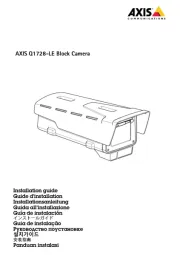
29 Juli 2025
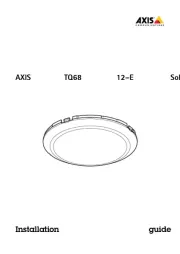
29 Juli 2025
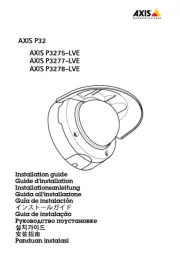
29 Juli 2025
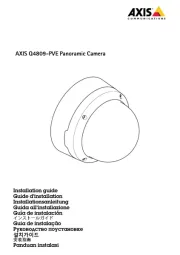
29 Juli 2025

29 Juli 2025
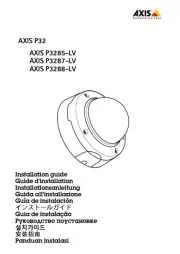
29 Juli 2025
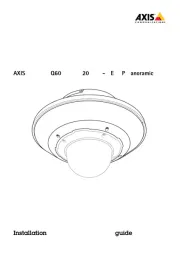
29 Juli 2025
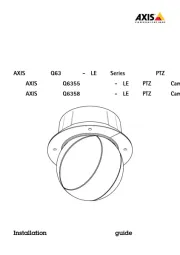
29 Juli 2025
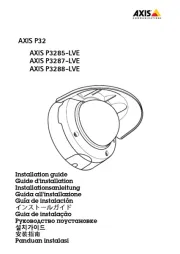
29 Juli 2025
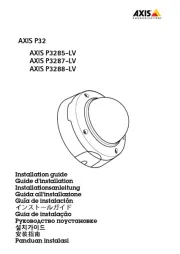
29 Juli 2025